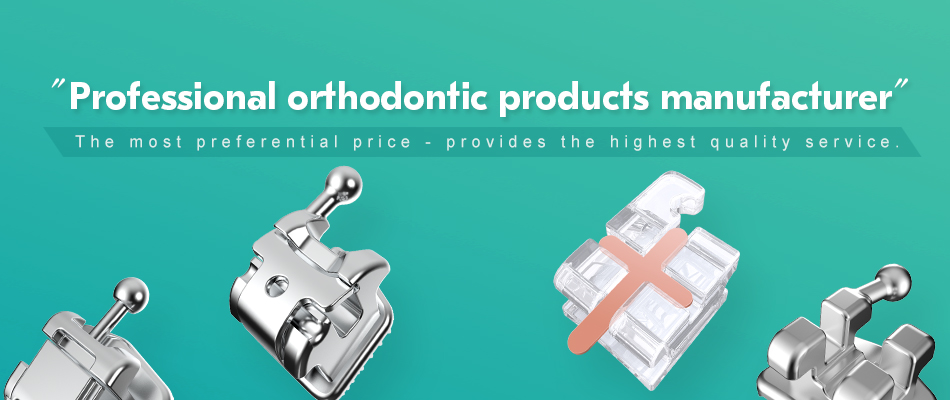In the field of modern orthodontics, self-locking bracket correction technology is leading the new trend of dental correction with its unique advantages. Compared to traditional orthodontic systems, self-locking brackets, with their innovative design and excellent performance, provide patients with a more efficient and comfortable orthodontic experience, becoming the preferred choice for more and more quality orthodontic professionals.
Revolutionary design brings breakthrough advantages
The biggest technological breakthrough of self-locking brackets lies in their unique “automatic locking” mechanism. Traditional brackets require rubber bands or metal ligatures to secure the archwire, while self-locking brackets use sliding cover plates or spring clips to achieve automatic fixation of the archwire. This innovative design brings multiple advantages: firstly, it significantly reduces the friction of the orthodontic system, making tooth movement smoother; Secondly, it reduces the stimulation of oral mucosa and greatly improves the comfort of wearing; Finally, clinical procedures have been simplified, making each follow-up visit more efficient.
Clinical data shows that patients using self-locking brackets can shorten the average correction period by 20% -30% compared to traditional brackets. Taking common cases of tooth crowding as an example, traditional brackets usually require 18-24 months of treatment time, while self-locking bracket systems can control the treatment process within 12-16 months. This time advantage is particularly important for patients who are about to face important life milestones such as further education, employment, weddings, etc.
Redefining orthodontic standards for comfortable experience
Self locking brackets have shown particularly outstanding performance in improving patient comfort. Its smooth surface design and precise edge treatment effectively reduce the common oral ulcer problems of traditional brackets. Many patients have reported that the adaptation period for wearing self-locking brackets is significantly shortened, usually fully adapting within 1-2 weeks, while traditional brackets often require 3-4 weeks of adaptation time.
It is worth mentioning that the follow-up interval for self-locking brackets can be extended to once every 8-10 weeks, which provides great convenience for busy office workers and students with academic stress compared to the traditional bracket’s 4-6 week follow-up frequency. The follow-up time can also be shortened by about 30%, and doctors only need to perform simple opening and closing operations to complete the replacement of archwires, greatly improving the efficiency of medical treatment.
Precise control achieves perfect results
The self-locking bracket system also performs well in terms of correction accuracy. Its low friction characteristics allow doctors to apply softer and more sustained corrective forces, achieving precise control over the three-dimensional movement of teeth. This characteristic makes it particularly suitable for handling complex cases such as severe crowding, deep overbite, and difficult malocclusion.
In clinical applications, self-locking brackets have demonstrated excellent vertical control ability and can effectively improve problems such as gingival smile. At the same time, its sustained light force characteristics are more in line with biological principles, which can reduce the risk of root resorption and ensure the safety and reliability of the correction process.
Oral health maintenance is more convenient
The simple structural design of self-locking brackets brings convenience to daily oral cleaning. Without the obstruction of ligatures, patients can easily use toothbrushes and dental floss for cleaning, significantly reducing the common problem of plaque accumulation in traditional brackets. Clinical studies have shown that patients using self-locking brackets have a significantly lower incidence of gingivitis and dental caries during orthodontic treatment compared to traditional bracket users.
Technological innovation continues to upgrade
In recent years, self-locking bracket technology has continued to innovate and upgrade. The new generation of active self-locking brackets can automatically adjust the force application method according to different stages of correction, further optimizing the efficiency of tooth movement. Some high-end products also adopt digital design and achieve personalized positioning of brackets through computer-aided manufacturing, making the correction effect more accurate and predictable.
At present, self-locking bracket technology has been widely used worldwide and has become an important component of modern orthodontic treatment. According to data from several well-known dental medical institutions in China, the proportion of patients choosing self-locking brackets is increasing at a rate of 15% -20% per year, and is expected to become the mainstream choice for fixed orthodontic treatment in the next 3-5 years.
Experts suggest that patients should consider their own dental condition, budget, and requirements for aesthetics and comfort when considering orthodontic plans, and make choices under the guidance of professional orthodontists. With the continuous advancement of technology, self-locking brackets will undoubtedly bring better orthodontic experiences to more patients and promote the field of orthodontics to new heights
Post time: Jun-26-2025


